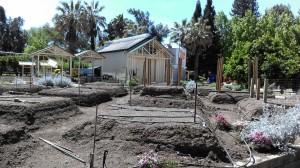Dry Farming
Dry farming seems like an oxymoron doesn’t it? Especially given California’s current looming drought, one would think that dry farming was a problem and not a productive strategy of yielding the desired harvest.
Dry farming is done successfully contingent on the soil’s ability to retain the moisture it does receive, even if it’s not very much. Essentially nature will determine which crops are sustainable in a particular environment. The soil should be manipulated when it is at its peak of moistness, and sealed with a layer of dry soil to prevent evaporation.
In this process the use of irrigation is unnecessary, therefore dry farmers save money. Another benefit is that the dry layer of soil deters the growth of weeds.
Grapes are the most commonly grown on dry farms, not only in California but Italy and Greece as well. Wine grapes in particular are successfully grown using this method in wine capitals such as Napa Valley. Other crops that thrive using dry farming include tomatoes, pumpkins, watermelons, cantaloupes, winter squash, olives, garbanzos, apricots, apples, various grains, and potatoes.
Information courtesy of http://agwaterstewards.org/index.php/practices/dry_farming/


